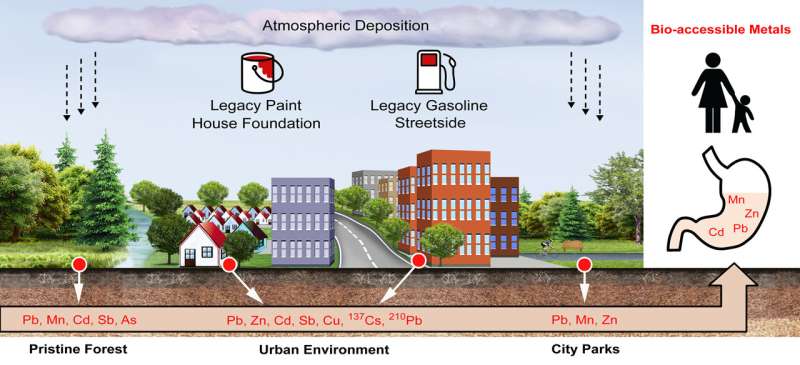New tests track sources of lead contamination in urban soils and assess its risks

Duke University scientists have developed a suite of isotope-based tests that can be used to identify the origin of lead contamination in urban soils and assess the risk it poses to children who inhale or ingest contaminated dirt or dust.
"These tests give public health officials reliable new ways to track the legacy of contamination that still persists in some urban soils decades after federal bans ended the widespread use of lead-based paint and gasoline," said Avner Vengosh, Distinguished Professor of Environmental Quality at Duke's Nicholas School of the Environment.
"We developed these tests to assess lead contamination in soils around Durham, N.C., but they could be used in similar cities anywhere," Vengosh said.
The new study builds upon another Duke-led study of lead contamination in Durham soils, published earlier this year, that showed while lead levels in urban soils around Durham are declining overall, hotspots of contamination remain, especially in foundation soils around older houses and apartment buildings—likely the legacy of lead paint use in these homes.
The new tests can distinguish between the isotopic ratio, or unique geochemical "fingerprint," of lead contamination from different sources, including pre-1970s vehicle exhaust fumes, lead paint from that era, or lead from more recent atmospheric sources. Measuring the radioactive isotope Caesium-137—caused by fallout from Cold War-era atomic tests—in the lead provides an added indication if the lead pre-dates the 1970s and stems from legacy contamination rather than recent sources.
This allows health officials to zero in on the origin of the contamination even at sites where there are many potential sources, said Zhen Wang, a doctoral student in Vengosh's lab who was lead author of the study.
The tests are designed to detect the presence of other potentially harmful metals, such as zinc, cadmium and antimony, often found in soils with elevated lead levels, Wang added.
"We also evaluated if any of these metals are bioavailable; that is, if they are in a form that can be readily absorbed into the human body after they are ingested. Our tests showed that the isotopic fingerprint of the bioavailable lead is identical to the isotopic fingerprint of the soil source and therefore can be used to track human exposures," he said.
Exposure to elevated levels of bioavailable lead in soil has been linked to long-term health risks in children, including possible damage to the brain and nervous system, slowed growth and development, learning and behavior problems, and hearing and speech problems.
"More than half of the lead we detected in a field test of 99 soil samples from Durham, N.C., was bioavailable," Vengosh said. "So, although levels of contamination from historical sources are declining overall, serious risks from legacy lead contamination do remain."
The new test could help doctors or public health officials track the source of lead found in children's blood or urine samples and identify where remediation efforts should be focused to prevent further exposures.
Vengosh, Wang and their colleagues published their peer-reviewed study Oct. 27 in the journal Science of the Total Environment.
More information: Zhen Wang et al, Legacy of anthropogenic lead in urban soils: Co-occurrence with metal(loids) and fallout radionuclides, isotopic fingerprinting, and in vitro bioaccessibility, Science of The Total Environment (2021). DOI: 10.1016/j.scitotenv.2021.151276
Journal information: Science of the Total Environment
Provided by Duke University





















